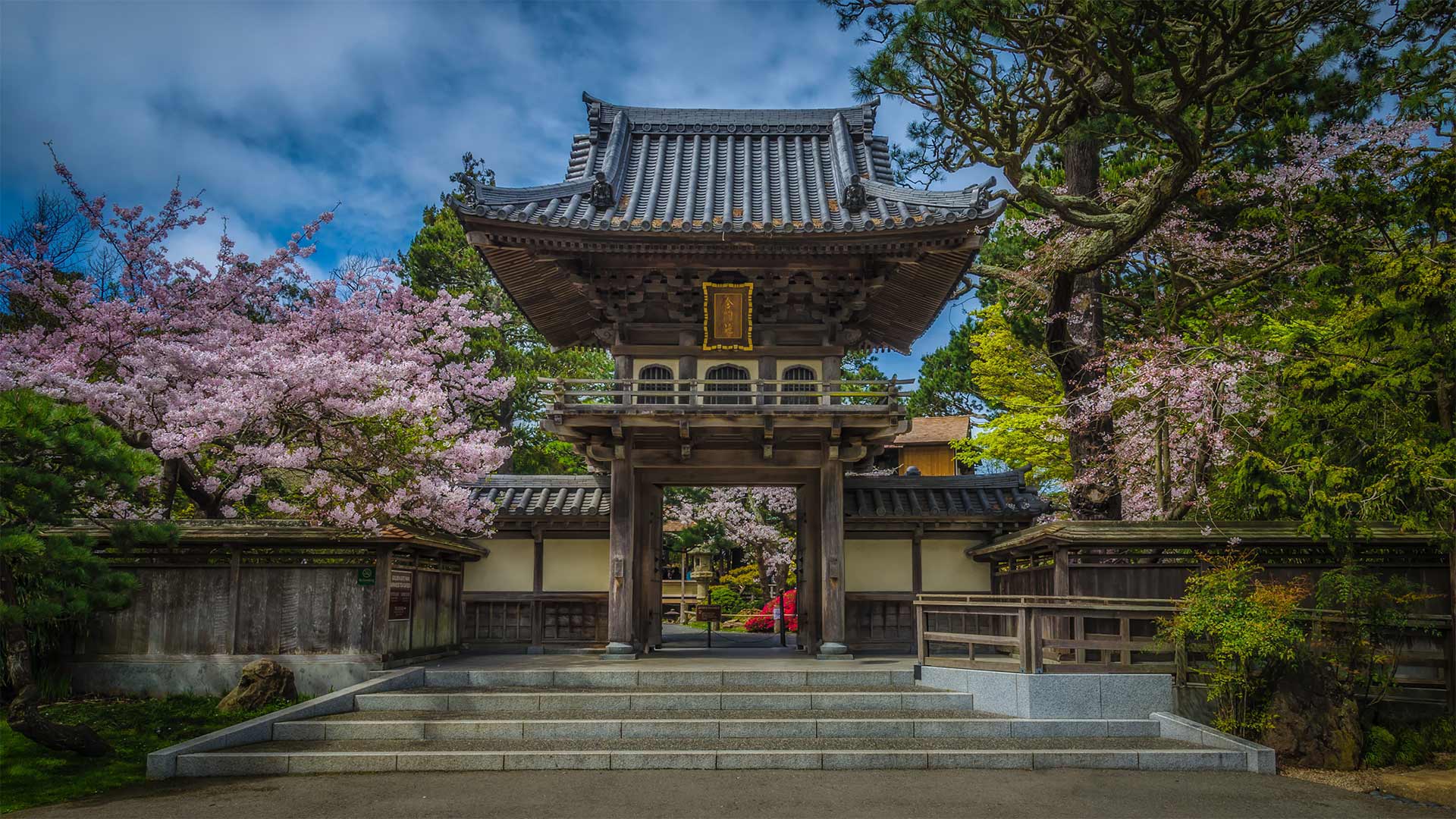金门公园中日本茶园里盛开的樱花,加州旧金山 Cherry blossoms in bloom at the Japanese Tea Garden in Golden Gate Park, San Francisco, California (© luisascanio/iStock/Getty Images)

金门公园中日本茶园里盛开的樱花,加州旧金山 Cherry blossoms in bloom at the Japanese Tea Garden in Golden Gate Park, San Francisco, California (© luisascanio/iStock/Getty Images)
It's Asian American and Pacific Islander Heritage Month
With Asian American and Pacific Islander Heritage Month kicking off today, we're visiting the Japanese Tea Garden in San Francisco's Golden Gate Park. Originally designed as a temporary exhibit in the 1894 World's Fair, the gardens became a permanent fixture in the park, overseen by landscape designer Makoto Hagiwara.
Hagiwara poured his money, passion, and talents into giving visitors to the garden an authentic taste of Japanese horticulture. Visitors then and today cross bridges over koi ponds and wander through pagodas and gardens full of native Japanese plants and trees. Hagiwara died in 1925, but his family remained in the house he built on the property until they were sent to an internment camp during World War II and the gardens were renamed 'Oriental Garden.' Once the war was over, the original name returned, but the family did not. Hagiwara's vision lives on in the gardens, and as one example of the millions of Asian and Pacific Islander Americans who've helped build and beautify our nation.
今天是亚裔美国人和太平洋岛民遗产月
今天,随着亚裔美国人和太平洋岛民遗产月的开幕,我们将参观旧金山金门公园的日本茶园。最初设计为1894年世界博览会的临时展览,花园成为公园的永久固定设施,由景观设计师Makoto Hagiwara监督。
Hagiwara倾注了他的金钱、热情和才华,让游客们能真正体验到日本园艺的味道。当时和今天的游客都会跨过锦鲤池塘上的桥梁,漫步在充满日本本土植物和树木的宝塔和花园中。哈吉瓦拉于1925年去世,但他的家人仍住在他在这片土地上建造的房子里,直到他们在二战期间被送到一个拘留营,这些花园被改名为“东方花园”。战争结束后,原名又回来了,但家人没有。哈吉瓦拉的愿景永存于花园之中,是数百万亚太岛民帮助建设和美化我们国家的一个例子。
评论已关闭